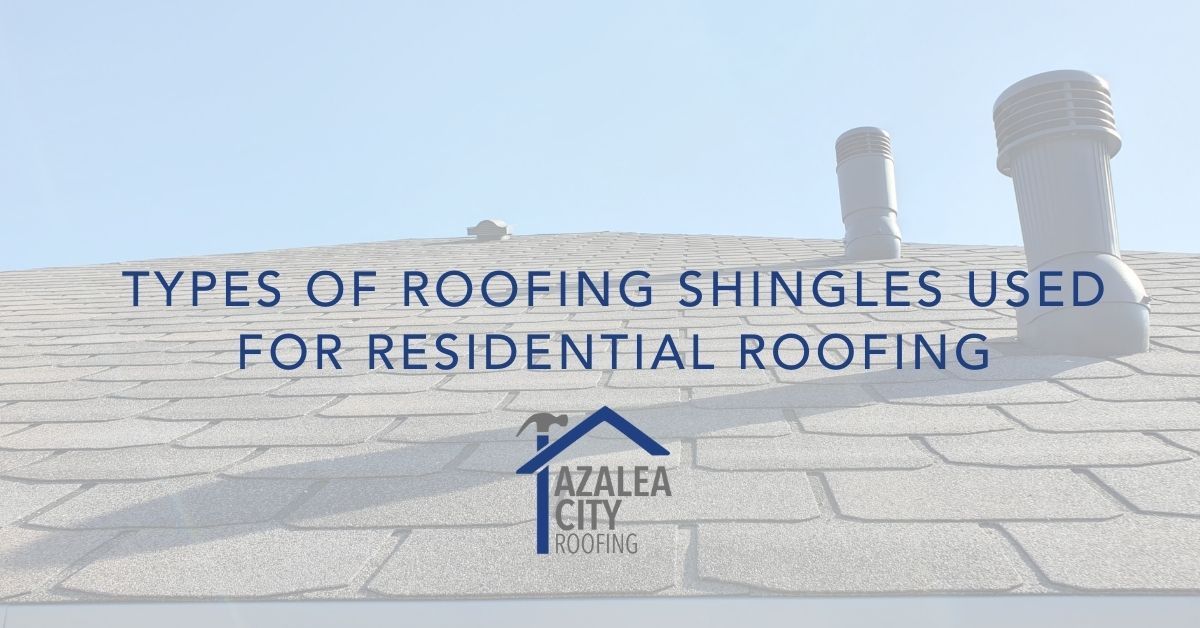If you are looking to replace your roof soon, one of the most important decisions you’ll be making is the material of the shingles you wish to use. Each material comes with unique benefits, drawbacks and aesthetic designs. Here are the six most common shingle materials used:
Asphalt
Asphalt shingles are made of asphalt reinforced by fiberglass or organic materials. This roofing option is sold in a multitude of colors and sizes. These shingles are inexpensive, widely available and last anywhere between 15 to 30 years. Asphalt shingles are waterproof, fireproof, limber enough to withstand snow and buoyant enough to tolerate moderate hail storms. These shingles are typically found on homes in the Northeast and Northwest but may be used on homes anywhere across the US.
Wood
Wood shingles are machine-cut from trees. The options include cedar, spruce or pine, to produce an environmentally friendly and natural-looking shingle that can last up to 25 years. Costing more than asphalt, but less than other options, this option comes at a reasonable price point. When damaged, these shingles tend to be more difficult to replace than asphalt shingles. The downside to these natural-looking shingles is that they are not fit for extremely dry and hot or wet climates due to their vulnerability to fire, hail and termites, which results in them chipping, cracking or splitting.
Metal
Metal shingles consist of aluminum, steel, copper or another alloy, and are available in a variety of shapes and sizes. These shingles are among the most energy-efficient shingle types due to their ability to reflect sunlight and, therefore, lowers cooling costs. These shingles tend to last for 50 to 75 years, and have maximum resistance to rain, rot, wind, fire and hail, making them a wonderful choice for homes in the Southeast and Northwest. However, these shingles cost more and produce noise when rain or hail hits the shingles.
Slate
Slate shingles have a sleek but rugged composition, contributing to their naturalism and durability. These shingles are heat, hail, moisture-resistant and noncombustible, allowing their lifespan to last anywhere from 50 to 100 years in all climates. However, these shingles are heavy and expensive, so it is best to consult a roofing expert or structural engineer before installing them. After these shingles are installed, it is best to leave any repairs or replacements to the same company that installed them to avoid injuries and inexperienced workers.
Clay and Concrete
Clay and concrete shingles are molded out into flat, barrel-shaped or scalloped tiles of different colors. These are popular choices for Spanish-style homes. Clay is noncombustible, non-fading and sustainable, while concrete reflects sunlight and insulates interiors from the harsh weather outside the home. Roofs made with either material will require consultation due to the heavyweight of the tile and tend to be moderate in terms of cost. These roofs typically last 40 to 50 years and repairing them is easier than the options mentioned earlier, but you cannot replace a shingle on your own.
Composite
Composite shingles are made of polymer, rubber or plastic and are available in a variety of colors and styles. These shingles are able to mimic the aesthetic of wood or slate, while also retaining their color over 50 years! Composite shingles are resistant to heat, moss, UV lights and impact. However, composite shingles are expensive and there is a narrow field of experts on these shingles. They also offer less insolation than the material they mimic, and may soak, freeze and warp in locations that experience frequent rain.
The decision of what shingles to use ultimately comes down to budget, durability and the environment in which you live. Azalea City Roofing strongly suggests sitting down with a roofing expert or structural engineer to help you fully understand the options available and, if you choose a heavier shingle, ensure that the structure of your home is strong enough to withstand the weight of the roof.


Recent Comments